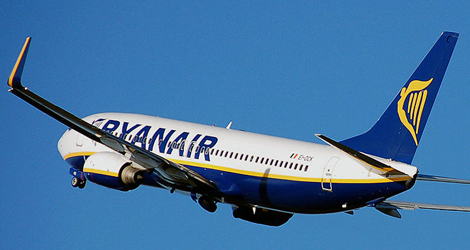Ryanair flight RY1116 originally took-off from Dublin at 09.50 hrs on the 8 November 2004 and landed without incident at Reus in Spain at 12.16 hrs. Earlier that morning the Captain of EI-CJC had completed a company revenue return flight from Dublin to East Midlands (EGNX).
Departure time from Reus was scheduled for 13.00 hrs. However, the Captain was asked by the company ground-handling agent at Reus to expedite his departure due to the imminent arrival of a company aircraft from Frankfurt Hahn (EDFH).
This request was not related to the need for a vacant stand, rather the personnel required for the physical handling of the aircraft.
Following a 26 minute turnaround, which included some pressure from the ground handling agent to expedite the departure, the flight crew configured the aircraft for a BLEEDS OFF takeoff.
No formal briefing took place with regard to the BLEEDS OFF take-off and supplementary procedures, relating specifically to NO ENGINE BLEEDS take-off with the APU operating, were not used in conjunction with the normal checklist.
It is clear that the AFTER TAKE-OFF checklist was not fully accomplished as the engine bleed switches remained in the “OFF” position for the entire climb.
The APU of Ryanair flight RY1116 did supply bleed air to the bleed air duct and achieved aircraft pressurization up to the very initial stage of the cruising level.
It is therefore considered likely that the parameters associated with the pressurization system (Cabin Altitude and Differential Pressure) were scanned during the climb and appeared as if the system was operating normally.
The AFTER TAKE-OFF checklist is read and actioned silently by the PNF, with the exception of the altimeter check, which must be responded to by the PF.
This check, in part, requires the following:
AIR COND & PRESS…………………SET.
This particular check is very general and while it is required and assumed that the PNF checks the entire air conditioning and pressurization system, it does not prompt the individual to check specific critical items on the panel itself.
The manufactures recent publication of a general revision of the 737 checklists, where, among other things, the AFTER TAKE-OFF checklist requires a challenge to explicitly set the position of the packs and bleed switches, should serve to resolve this situation.
With the AFTER TAKE-OFF checklist being read and actioned silently by the PNF of Ryanair flight RY1116 , the opportunity of “Challenge and Response” of a critical check item is lost.
A brief survey of a number of commercial operators using a similar type aircraft determined that the majority perform the AFTER TAKE-OFF checklist on the basis of “Challenge and Response,” with the auto-pilot (AP) engaged.
The Investigation, therefore, considers that the entire AFTER TAKEOFF checklist should be based on “Challenge and Response.”
A safety recommendation has been made to this effect to the operator.
The Operator’s SOP’s require that; “Passing 10,000 ft, the PF will perform a complete panel scan.”
The “Passing 10,000 ft” check provides one of the last opportunities in the climb to confirm that the pressurization and air conditioning system is functioning correctly and that the packs and the bleeds are properly configured. The SOP’s is a general statement and a more explicit mention of specific checks such as “Check Pressurization” and “Check status of APU” might create a greater focus on critical items during the check. The Investigation therefore makes a safety recommendation to that effect to the operator.
Download Report


0 Comments